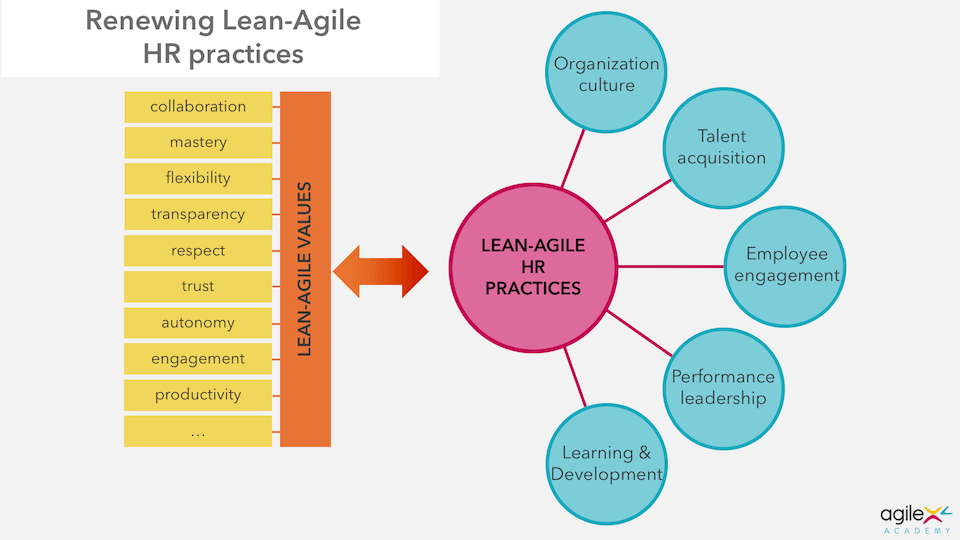Table of Contents
A change is necessary: Pandemic becomes the initiator.
Lifestyles, businesses, technology, and people themselves have evolved since the management philosophy of the 1970s, 1980s, and 1990s, but our working methods have not. Despite the fact that treating employees as individuals is an important aspect of AGILE HR, we continue to use one-size-fits-all approaches to managing and developing our people.

People desire greater flexibility and autonomy in their work, as well as the opportunity to be creative and be rewarded for their efforts.
They want to be recognised for their efforts and to be given realistic goals and objectives. HR payroll course They don’t want to be punished or fired for making mistakes; instead, they want to be given the opportunity and encouragement to learn from them. Employees want to be treated as individuals rather than numbers, and they want us to be concerned about them.
The Covid-19 situation just brought out these caveats of certain organisations and their employee behaviour at a global level. People were open to talk about the desire to have higher salaries, greater work life-balance and more importantly better mental well-being.
What is Agile HR?

When software developers began working on web applications, the agile technique was born. The requirement to bring new capabilities to market at a faster rate had never been seen before. As a result, teams, tools, and platforms evolved to accommodate this delivery manner, giving birth to the agile methodology. It meant that iteration, cooperation, self-organization, and invention were all prioritised.
Scrum and Kanban are two well-known agile methodologies for project management.
The agile methodology began in software development and quickly spread to other industries, including construction, agriculture, research, and medicine. It was the agile attitude that grew out of the concepts, not the methodology, that spread across sectors. HR is also making strides in adopting an agile approach.
Organizations that prioritise an agile HR approach are more likely to cope with change than those that do not.
As a result, agile HR is:
The ability to establish processes quickly is one of the most powerful characteristics of an agile HR approach. This implies a higher risk of failure, which isn’t necessarily a bad thing. It simply means that procedures are being implemented faster and that a problem solution can be produced much more efficiently. Change is not accepted in a traditional HR approach, and a system must be adjusted to 110 percent effectiveness before being deployed.
Prototyping — in which HR professionals’ experiment, plan, and analyse the optimal delivery methods – is also encouraged by this mentality shift. A team of IT professionals, an HR manager, recruitment, marketing, and other professionals is a basic example of this.
So what is the role of Agile HR?

AGILE means identifying and treating your people as
- Able
- Game-changers
- Individuals
- Leaders and
- Engaged
When we get this right, our employees are more engaged, their performance increases, and we have happier employees and customers.
Agile Employees are at the centre of HR’s efforts. While managers support and develop their people, the HR function becomes a facilitator of change and development. Employees take on greater responsibility for their goals, performance management, learning and development, and career advancement. The employee assumes responsibility for his or her work and operates independently.
This allows managers to focus on management and HR to focus on organisational growth and development.
Benefits of an agile HR approach
The following are just a few of the advantages of adopting an agile HR strategy:
Improved team collaboration : Employees from various parts of the organisation are communicating and cooperating more effectively. Agile HR also places a premium on transparency, which increases team trust.
Feedback is given more frequently and consistently : HR may then build solutions that are both relevant and effective as a result of this.
Better adaptability : The pandemic has brought to light the importance of teams being able to adjust to shifting circumstances. The agile technique strives to “test, learn, and optimise,” allowing teams to make quick changes if necessary.
Greater output measurement : Agile places a premium on outcomes, as evidenced by the dashboards and visualisations that are currently available.
Agile HR in the future
HR must improve its ability to adapt to technological changes in order to meet the needs of the company and its consumers. It must be able to flex, adapt, listen, and communicate, as well as identify answers rather than pondering why things cannot be accomplished. HR must be able to work with simple, flexible, and well-understood minimal policies. We must abandon what worked 30 years ago and speak with them to see what they truly require. Organizations of various sizes are involved in these discussions, and the internal debates appear to be focused on greater learning and OD rather than HR.
Conclusion
AGILE HR does not have to be difficult, but we must concentrate on altering our own mindsets, as well as the mindsets of our teams and businesses.
- We must be people specialists rather than transactional services, while transactions will undoubtedly be required.
- encourage ideas, creativity, and innovation for your people
- show that your people are individuals
- show that your people are leaders
- reflect a shared purpose, shared vision, and shared values that you would be proud to share with your family and friends
Recommended Reads:
- Top 9 HR Payroll Courses in Surat
- Top 10 HR Payroll Course in Kanpur
- How to Create a Human Resource Strategy
- Top 50 HR Interview Questions And Answer Techniques
- Emotional Quotient in Human Resource










.webp)
